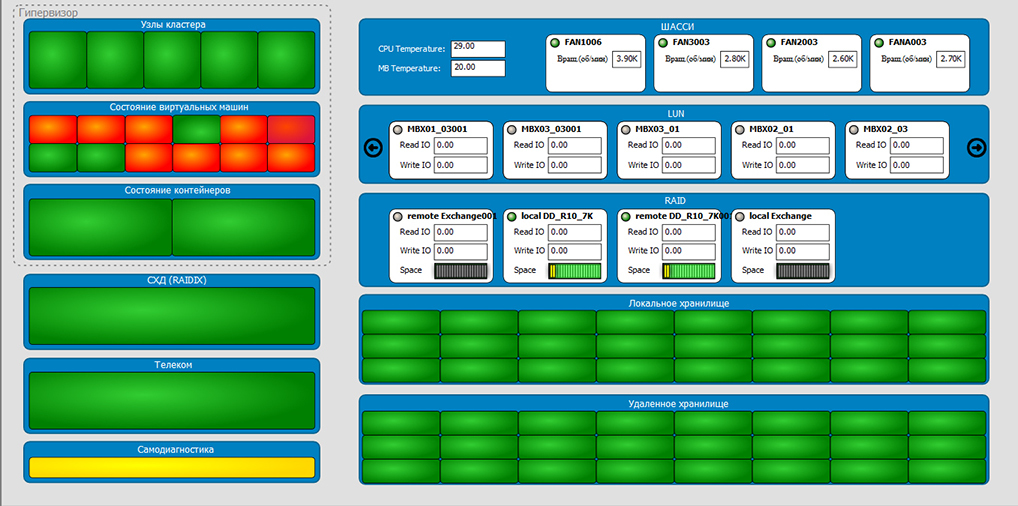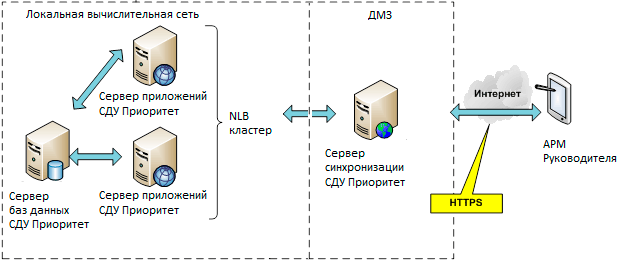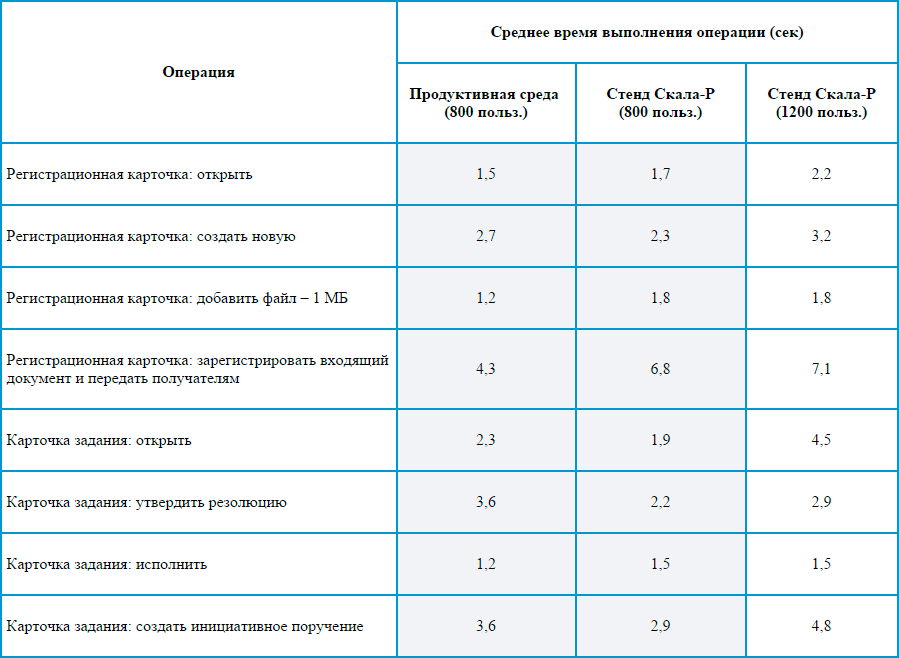How we tested the Russian workflow system on the Scala-R convergent platform

Interface of the monitoring system "Scala-R"
Our team created the Scala-R convergent complex as a universal infrastructure platform for a private cloud. We have done so that it can carry hundreds of business-critical systems in its virtual environment and equally well copes with the loads of each of them, despite the diversity of the underlying technologies. We already told on Habré that Skala-R copes well with SAP R / 3 workloads. But ERP in a large organization, as a rule, is not the only multi-user application system. Historically, dozens of systems can build up on a variety of platforms with different load profiles, which should normally move to a private infrastructure cloud.
Therefore, for the next test, we decided to deploy on the “Rock” a Russian document management system based on Microsoft technologies - significantly different from R / 3 in both platform solutions and the information processing paradigm.
')
In July-August 2015, the IBS Interlab team conducted a full-fledged testing of the document management system and document management "Priority" on the Docsvision platform at Skala-R. To get the most reliable results, we attracted the specialists who created this solution from Digital Design , with whose participation we deployed the latest version of the product. Together we developed load tests that quite accurately emulate user actions in the system and took measurements of performance indicators.
What kind of system we tested
Testing of the CDS "Priority" at "Skale-R" was carried out on the basis of a configuration identical to that used in a large state institution of the federal level, where more than two thousand employees work. The system under test cannot be called highly specialized: it is quite comparable with the systems of other large state and commercial structures with developed administrative management and well-regulated workflow procedures. The workflow of the workflow system was tested for variants 800 and 1200 simultaneous users.

Load testing scheme
In any workflow system, the main difficulties arise at the interface with the storage system. Absolute and comparative indicators for computational resources and RAM are not of practical interest, since they are never a “narrow neck” in such systems, and the need for these resources can certainly be met. That is why our tests were devoted specifically to the evaluation of work with the storage network and comparison with the results in the current productive system with a classic SAN.
For a start, it is worthwhile to briefly dwell on the structure of the Scaly-R storage subsystem, since it is equipped with two storage networks. The first is a distributed software-defined array built on the internal disks of the compute nodes. In our experiment, it was used to store guest operating system data. The second storage network is a classic disk array that is part of the Skala-R complex of the 500 and 700 series used to store application data. In this case, for the purposes of the test, a single shelf was used with 10 NL-SAS 1 disks installed with a TB capacity of 7,200 rpm organized in RAID 10 connected using a single SAS 6G channel. We minimized caching capabilities, which for the end user translates into a significant reduction in storage costs: fewer functions - less money.
The load emulators were two virtual nodes running Windows Server 2008 R2, equipped with 32 GB of RAM. They executed two different load scenarios in Microsoft Visual Studio 2013 for 800 and 1200 simultaneous users. The measurements were performed during the execution of the load scenario - within two to four hours.
The storage network in the operational environment was implemented on a rather expensive Western-made disk array and included 8 SAS 900 GB disks at 10 thousand rpm, that is, the performance of the array on the Skala-R is already on the idea (if you count it by spindles) should be about 25–30% lower.

Connection diagram of the remote workstation
results
According to the results of the tests, the results were obtained for the execution time of standard operations, which we immediately present in the table along with the results obtained when performing the same test, but on the real infrastructure (see the table below).
* key parameters were measured for the basic objects of the system: the registration card of the document and the job card.

The average execution time at the Skala-R stand under a load of 800 users exceeds that in the operating environment of the operating organization with the same load in four out of eight positions, and in the other four - on the contrary, it shows a higher speed. With the increase in the number of users up to 1200, the reaction time remains the same when two commands are executed, and in other cases it changes slightly, without having a serious impact on the maximum system performance. Discrepancies on the operation “Registration Card: register the incoming document and transfer to recipients” are within the permissible limits.
For completeness, let's look at the measurement results, stand load:
- Processor (%): 5.8 / 9 (for 800/1200 users here and hereafter);
- I / O operations (% of maximum, obtained as a result of a synthetic test): 1/2;
- Average queue length to disk: 0.01 - 0.02.
The conducted research allows us to draw the following conclusions:
- The document management system "Priority" based on the Docsvision platform is recommended for installation in the virtual environment of the "Skala-R" complex and is fully compatible with it.
- The Skala-R virtual environment fully satisfies the requirements for providing high performance for high-performance-demanding storage network of highly loaded document management and document management systems for large organizations.
And now more. The test clearly demonstrated that when all users work simultaneously, the system does not use all of the calculated processor power. Thus, the involvement of expensive equipment is impractical and leads to unnecessary costs. Virtualization will significantly improve the efficiency of using the hardware platform.
It is possible to achieve the necessary productivity without excess costs of the expensive equipment: it is enough to type the required storage capacity with not very capacious disks. Therefore, the decision on the organization of the storage subsystem, offered as part of the Skala-R complex, is ideal even in the simplest configuration.
And then elementary mathematics: in a productive environment with dedicated storage and fast disks, the cost of a terabyte of data started at about $ 2,000, Skala-R uses a more modest array, a terabyte of which costs less than $ 1,000 in a fully resilient configuration and less than $ 600 US dollars when used in a configuration with a single disk array management module. Difference: at least twice.
Thus, we have not only confirmed the efficiency of using the Skala-R complex from a technical point of view, but also affirm that in actual conditions it can significantly reduce the total cost of ownership of information systems.
IBS experts, Alexander Ignatiev, Andrei Nikolaenko and Andrei Sungurov, colleagues from Digital Design: Yuri Zhukovets, Andrei Kalinin, Valery Khmelnitsky, and Sergey Kuryanov from Docsvision took an active part in preparing the post.
IBS Interlab Team .
Source: https://habr.com/ru/post/271235/
All Articles